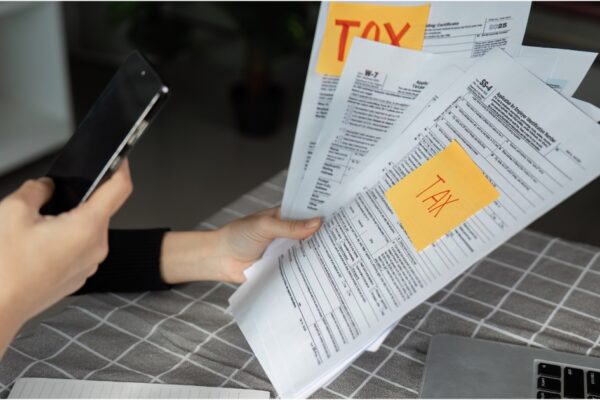Tax Strategies for High-Income Earners: The Power of Tax-Loss Harvesting
High-net-worth individuals pay a lot of taxes and make a lot of money from investments. Using smart tax strategies for high-income earners is key to keeping more of your money.
Tax-loss harvesting is one useful method. This means selling investments that have lost value to make up for gains from other ones. This lowers your taxable income and the amount of taxes you owe. It also helps you grow your wealth over time by making more money work for you.
What does tax-loss harvesting mean?
Tax-loss harvesting is a clever approach to pay less in taxes. You achieve this by getting rid of investments that have lost value. Then you can lower the taxes on any money you made from other investments by using that loss. You can utilize a loss on one stock to minimize the tax on a profit on another one, for example. This helps you keep more of your money and pay less in taxes.
You can also cut a small percentage of your ordinary income tax each year if your losses are higher than your gains. It’s important to sell the proper investments at the right moment. Also, think about your long-term goals when you use this method.
Why Is Tax-Loss Harvesting Important for High-Income Earners?
People who make a lot of money pay more taxes on their investment profits. The long-term capital gains tax will increase up to 20% for those in higher tax brackets in 2025. Also, you might have to pay the 3.8% Net Investment Income Tax (NIIT). This means that rich investors could pay as much as 23.8% on long-term gains and even more on short-term gains.
This is why tax-loss harvesting is so useful. Here’s why:
- You can use it every year to help you manage your money.
- It helps you reinvest your money wisely so that you don’t miss out on development.
In summary, tax-loss harvesting enables people who make a lot of money pay less in taxes and grow their wealth quicker.
The main benefits of tax-loss harvesting
1. Reduce Capital Gains
The best thing about it is that it helps cut taxes on profits. You have to pay taxes on the money you make when you sell investments that earned money. But if you sell investments that lost money, you can get back some or all of the tax on your profits.
2. Lower your regular income
If you lose more money than you make, you can utilize up to $3,000 per year to minimize your ordinary income taxes. You can also carry over additional losses to the next year.
3. Increase Returns After Taxes
When taxes are lower, you get to retain more of your money. Using tax-loss harvesting every year can save you a lot of money and help your wealth increase quicker over time.
4. Help Rebalance Your Portfolio
Tax-loss harvesting lets you look over your investments. You can change your portfolio to decrease the risk and keep working toward your goals.
The Right Way to Use Tax-Loss Harvesting
1. Look at your portfolio often
Check your investments on a frequent basis. This helps you find losses you can employ, especially when the market goes up and down. During these periods, some assets may lose value, which gives you a chance to take losses.
2. Follow the Rule of the Wash Sale
The “wash sale rule” is a rule from the IRS. If you buy the same or a comparable investment within 30 days before or after selling it, you can’t declare you lost money.
If you want to obey the guideline
- You have to wait at least 31 days before buying the same investment again.
- Or, get a separate investment that isn’t the same one. You could, for instance, you can trade one S&P 500 ETF for a fund that tracks a different index.
3. Make sure it fits with your tax plan.
Tax-loss harvesting should be a part of your whole tax and financial plan. Check to see if it fits well with your capital gains, retirement savings, and plans for your estate.
4. Automate It with Smart Tools
A lot of robo-advisors and online platforms let you automatically capture tax losses. These tools keep an eye on your investments all the time and look for ways to save you money on taxes. This makes things quick and simple.
Things to avoid while harvesting tax losses
You can save money using tax-loss harvesting, but you have to be careful. People who make a lot of money should be careful about these common mistakes:
- Too much or too fast selling
Don’t sell solely to save money on taxes. If you sell too often or because of how you feel, your portfolio could suffer. Every transaction should nevertheless help you reach your investment goals.
- Breaking the Rule of Wash Sale
You lose the tax break if you acquire the same or a substantially similar investment within 30 days. To follow the rule, always keep track of the dates and make sure your records are clear.
- Not remembering the big picture
In the long run, tax-loss harvesting is helpful. But don’t let that get in the way of what you want to do. Keep your mind on building your wealth, keeping your portfolio balanced, and executing your comprehensive tax plan.
When is the best time to do tax-loss harvesting?
If you make a lot of money, you might want to think about adopting tax-loss harvesting in these situations:
- When the stock market falls down and some of your investments lose value for a short time.
- At the end of the year, to lower your taxes by lowering your capital gains.
- After you sell a business or piece of property, and make a lot of money.
- When you obtain a big bonus, stock options, or your restricted stock becomes available.
In any of these situations, you can minimise your tax burden by leveraging your investment losses. This way, you keep more of your money, and your wealth grows over time.
Tax-Loss Harvesting vs. Tax Deferral
Tax-loss harvesting and tax deferral are two good approaches to deal with your taxes.
- Tax-loss harvesting helps you pay less tax this year. You use losses from investments to make up for gains. If you got money by selling investments or if the market went down, this works great.
- Tax deferral helps you put off paying taxes on your income. Putting money into a 401(k) or a deferred compensation plan, for instance, pushes that money into the future, when your tax rate is normally lower.
Both tactics work well on their own, but they work much better when you use them together. Tax deferral lowers your future tax burden, while tax-loss harvesting saves you money right now.
Why You Should Get Help from a Professional
At first, tax-loss harvesting may appear simple, but it gets harder as your investments increase. People who make a lot of money frequently possess different kinds of assets, pay more taxes, and have huge financial aspirations. That’s why you should hire a tax counsellor or wealth manager.
Professionals can help you make the greatest tax-saving decisions, follow all IRS requirements, and make sure your plan works for your retirement, estate, and company goals. This kind of expert aid is available from many accounting companies in Atlanta, which makes the procedure easier and more efficient.
End Note
Tax-loss harvesting is a clever and easy approach for people with a lot of money to pay less in taxes and enhance their wealth. It doesn’t get rid of taxes, but it does assist lower them. When combined with other smart tax methods, it can improve long-term profits. Use it all year long to do better with your money.





